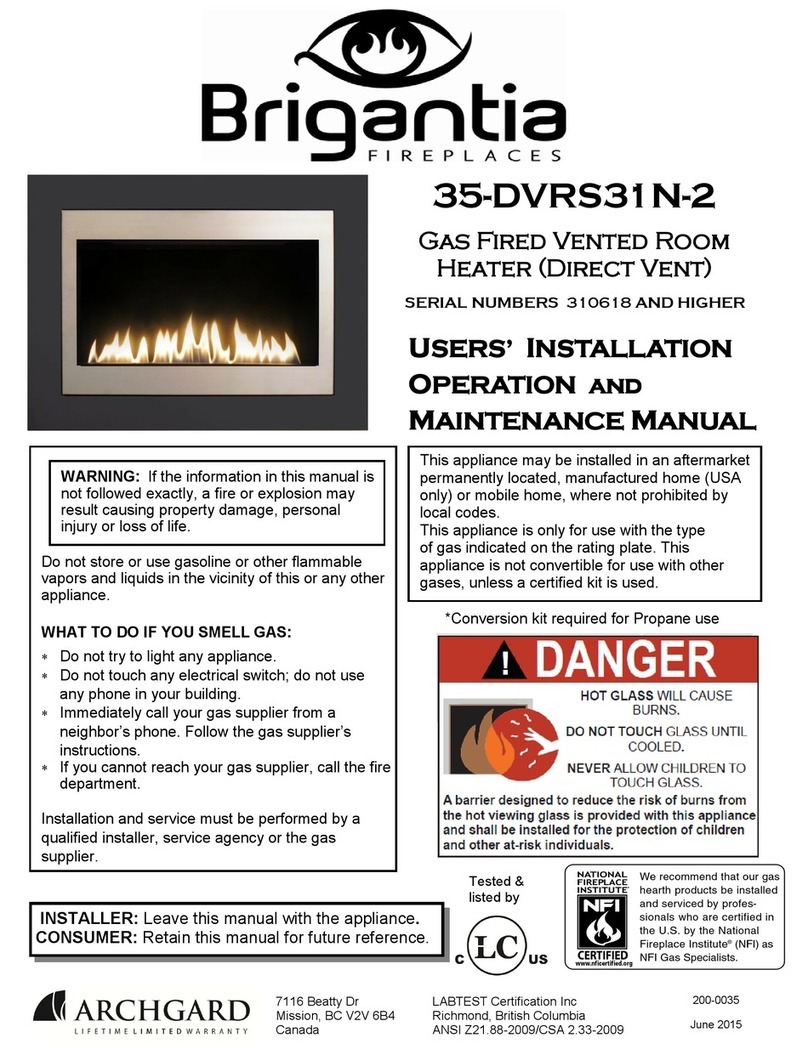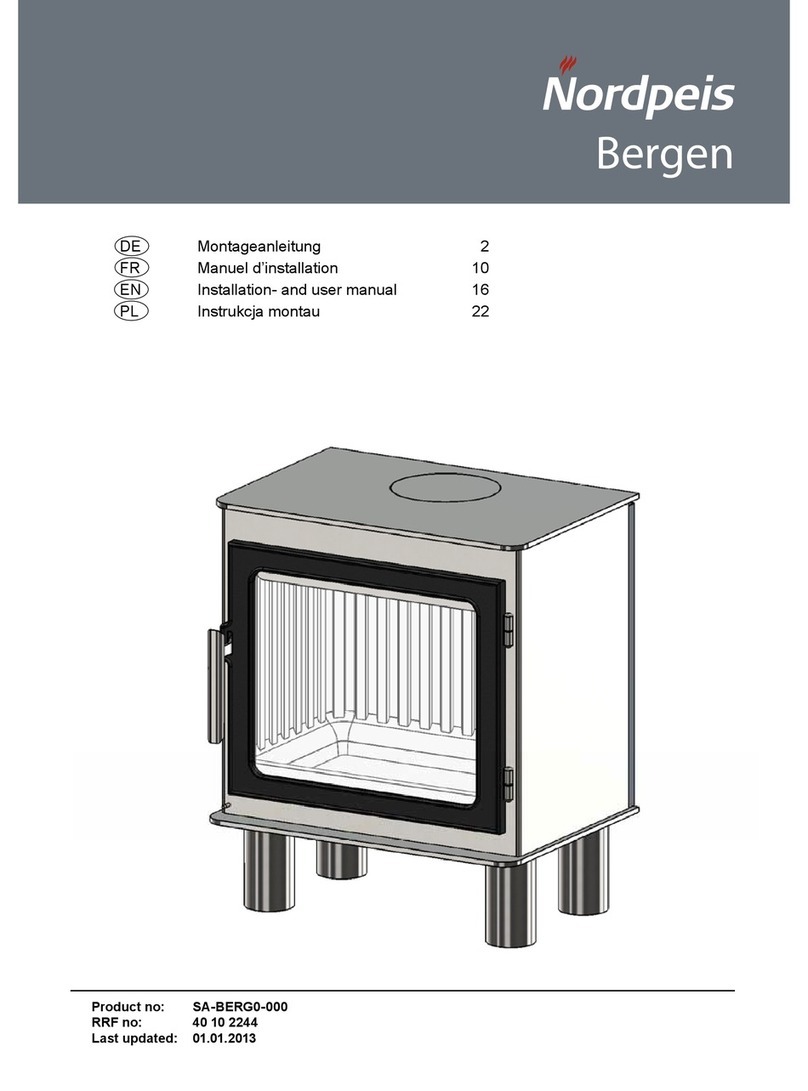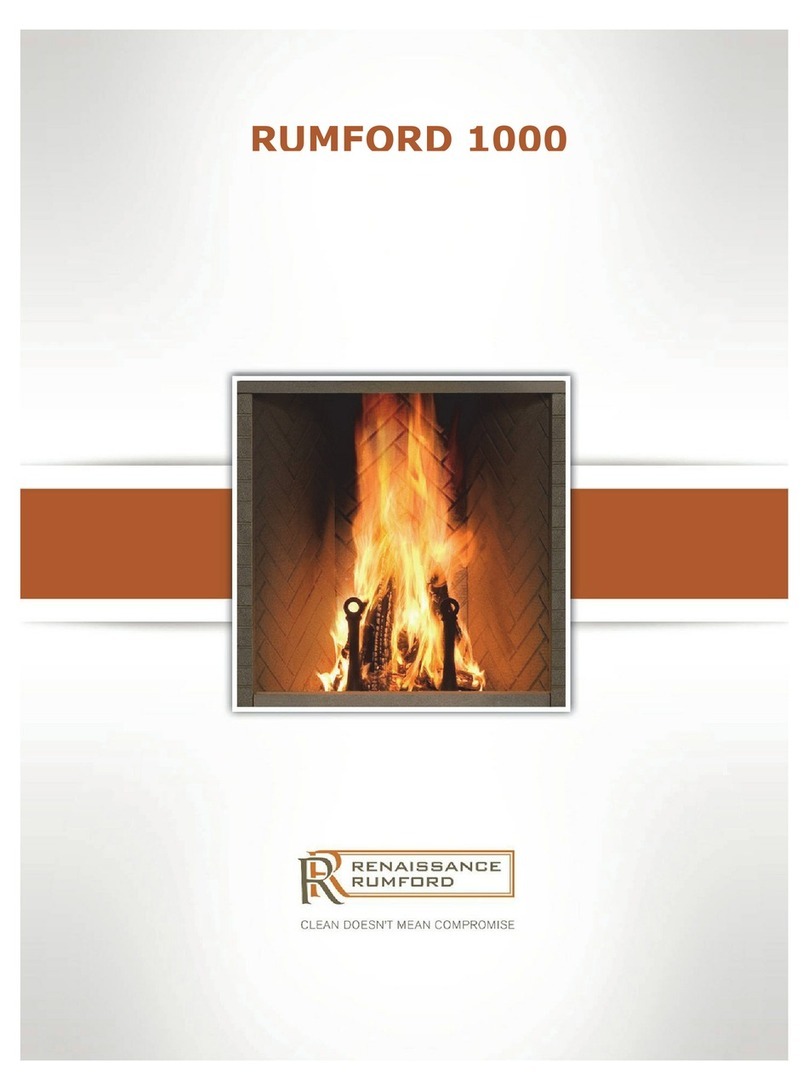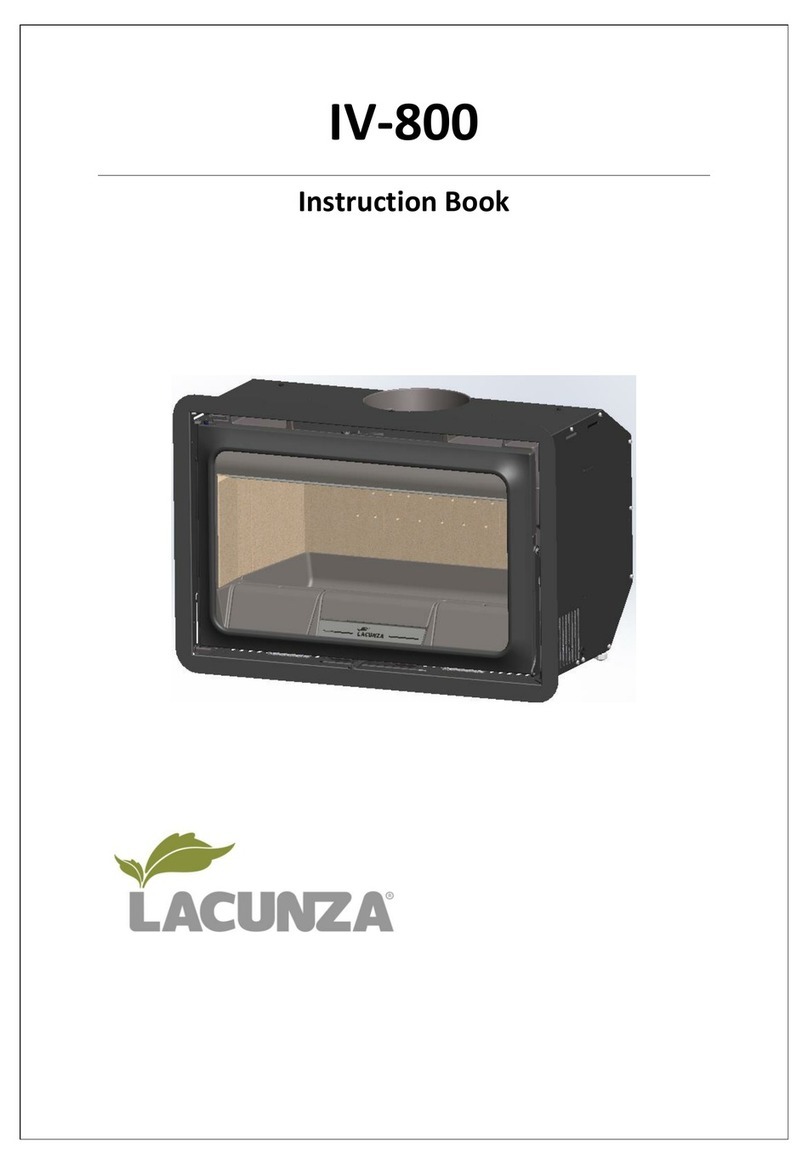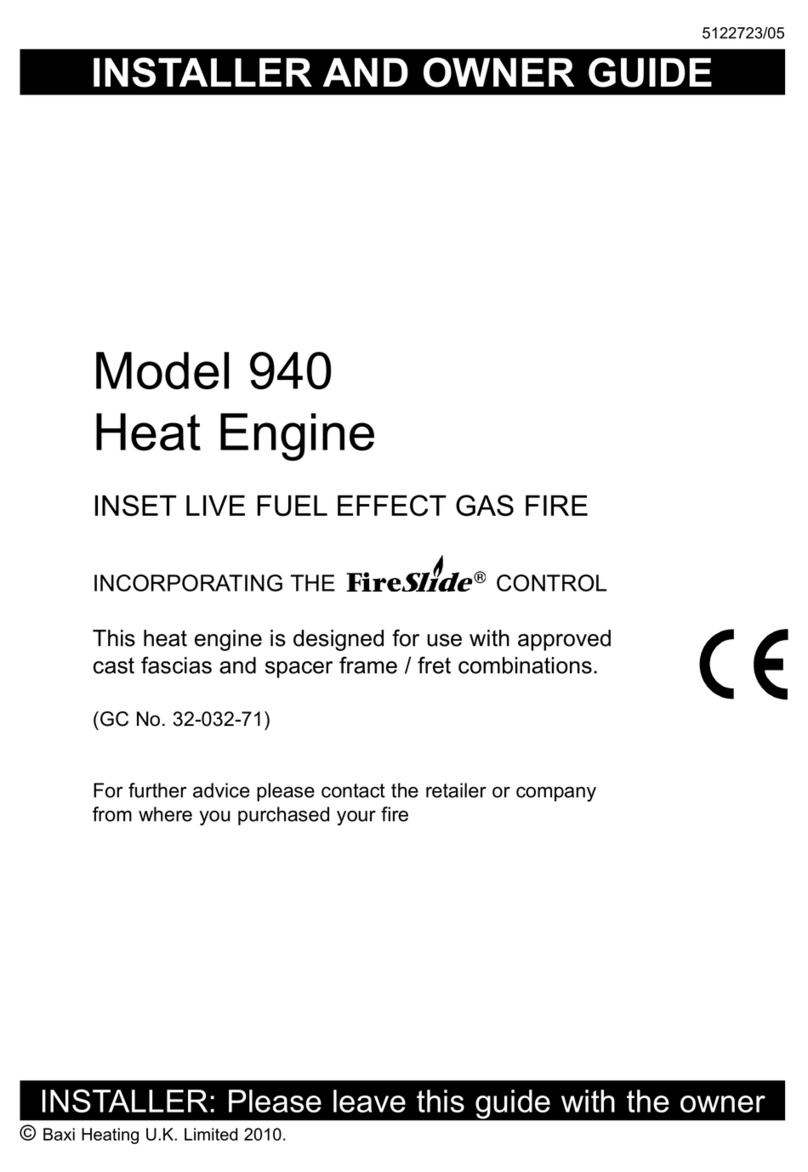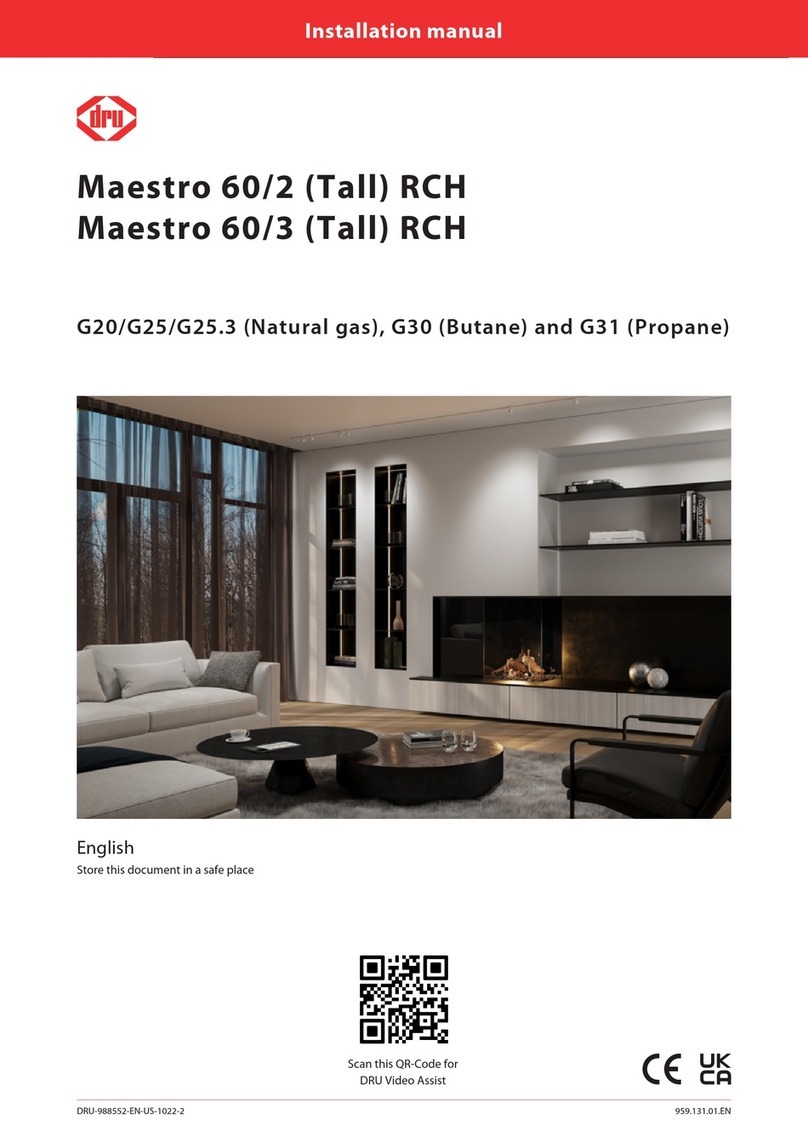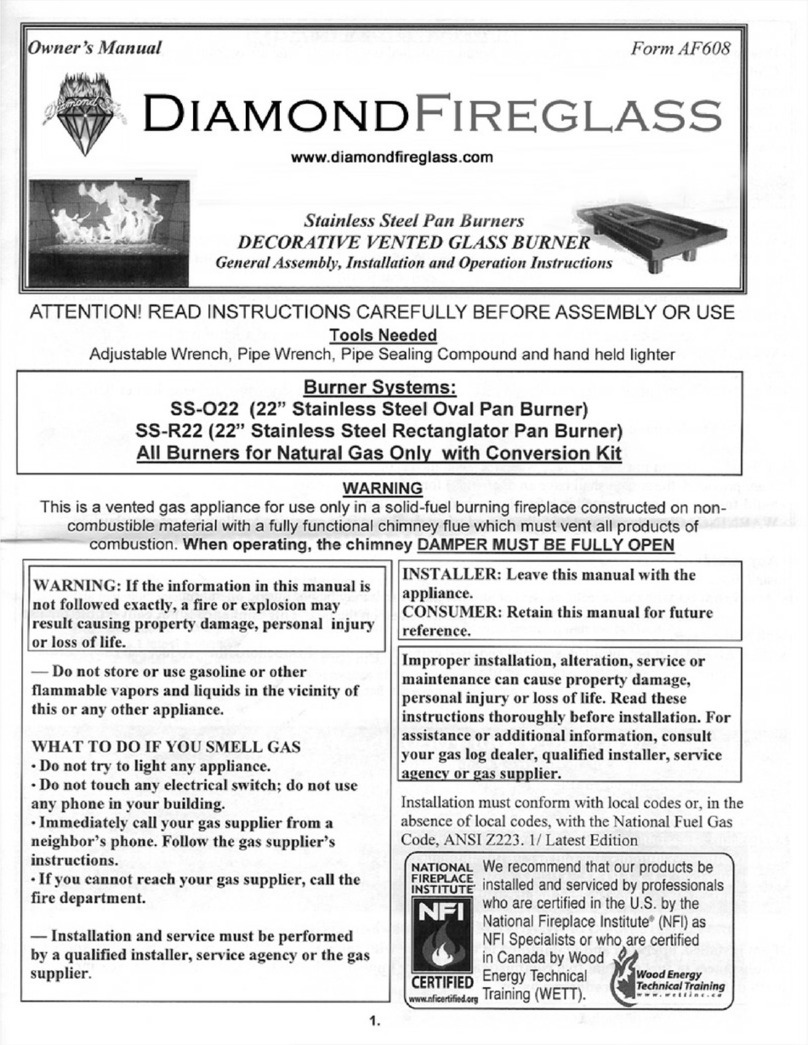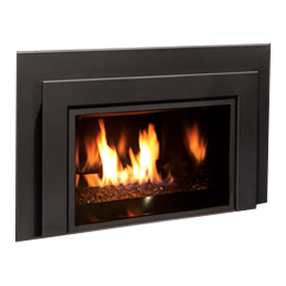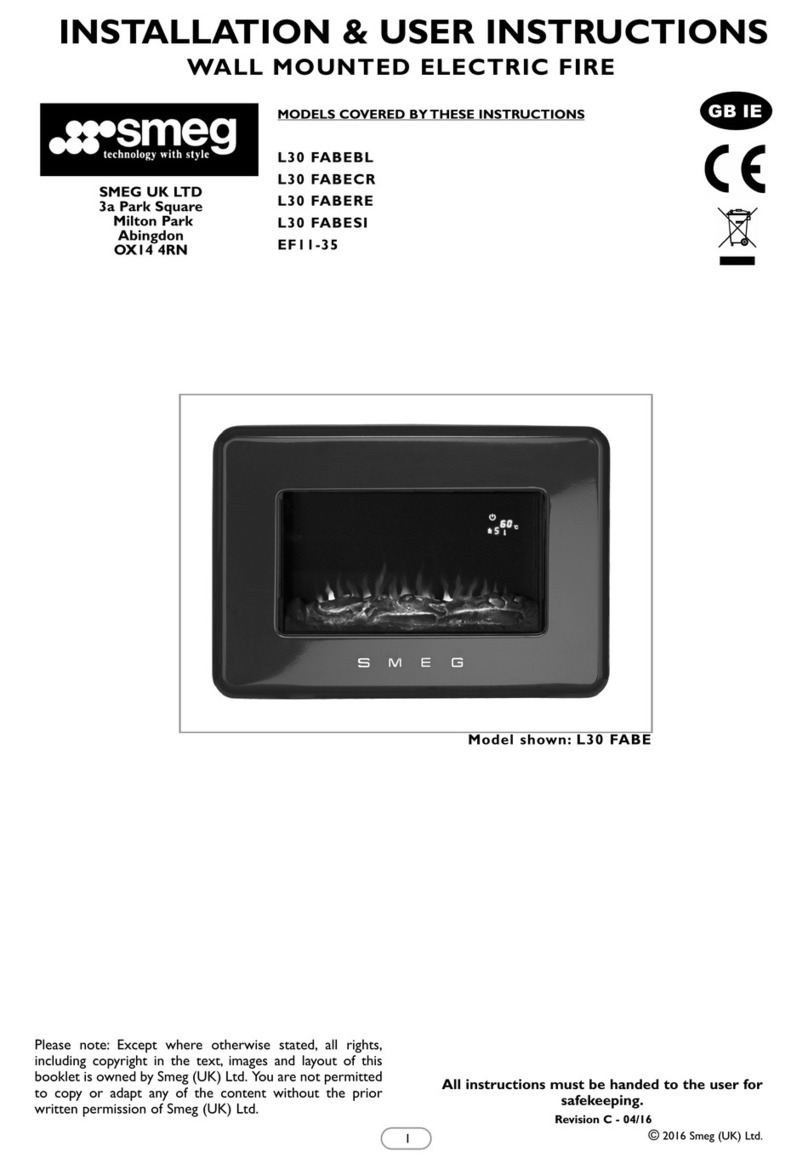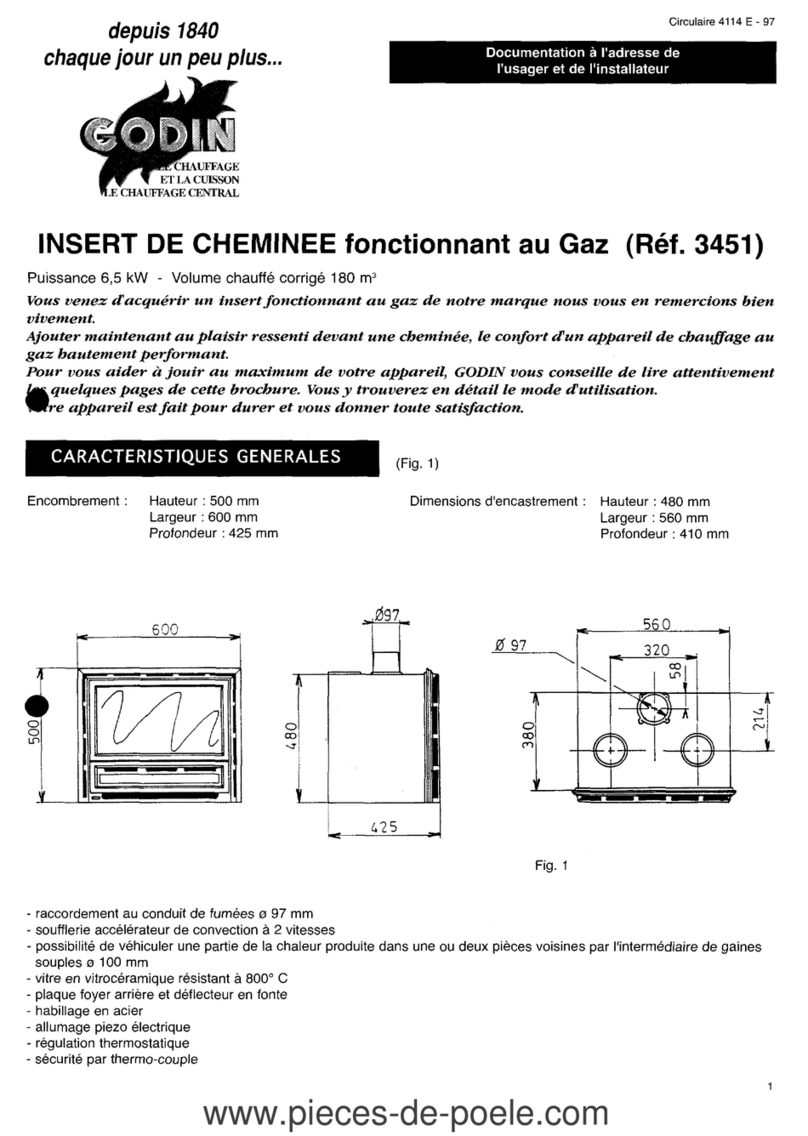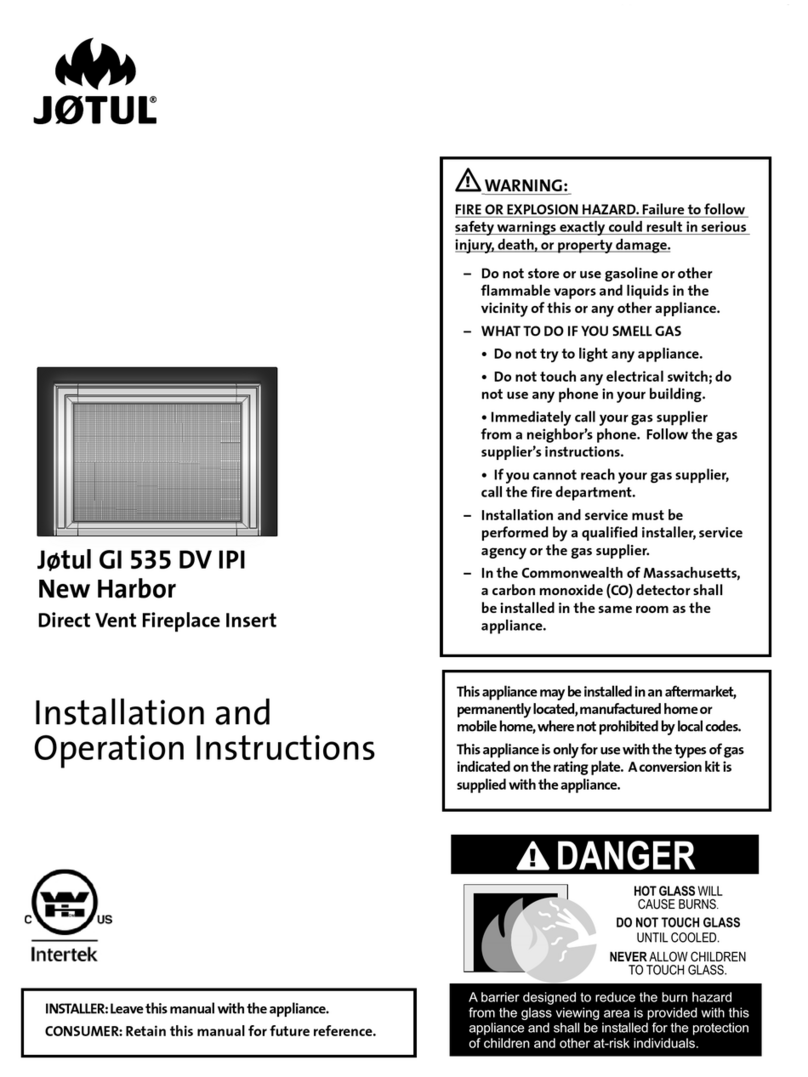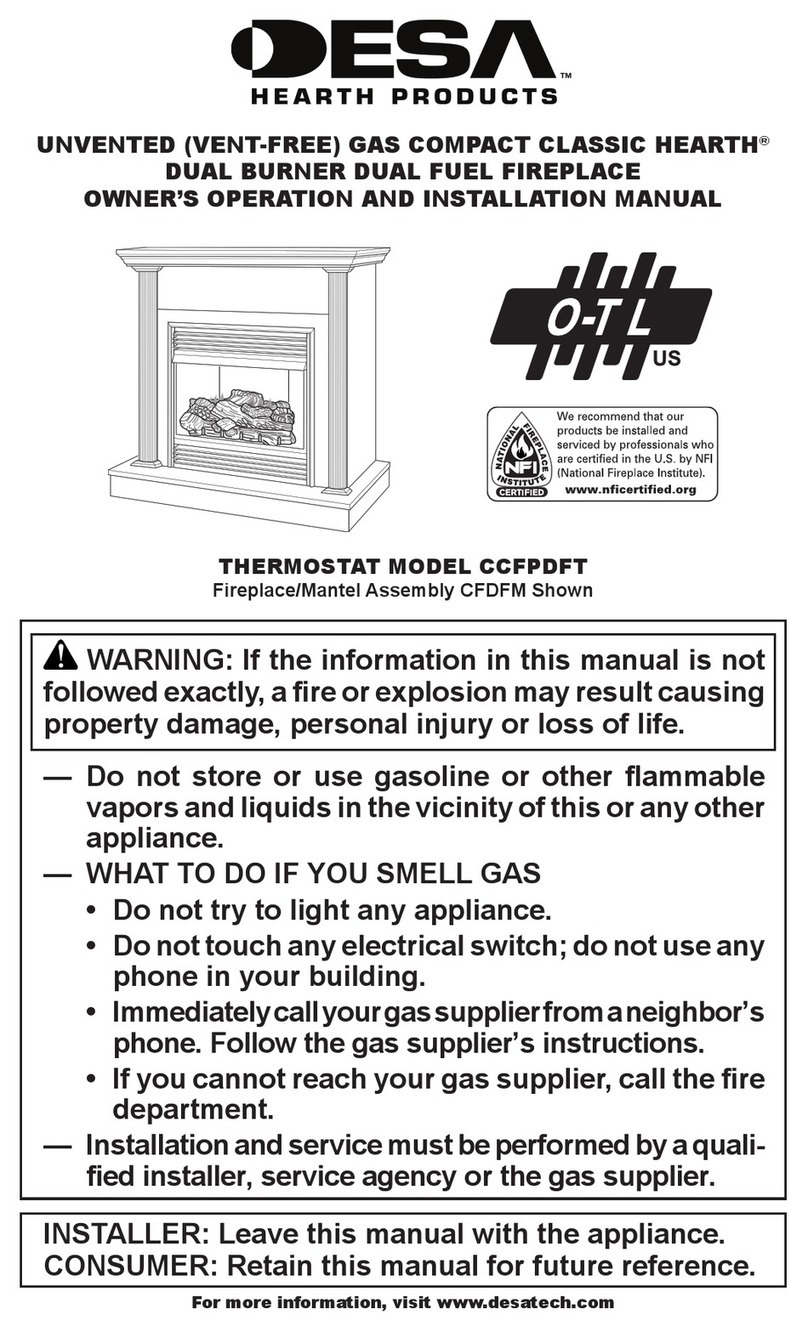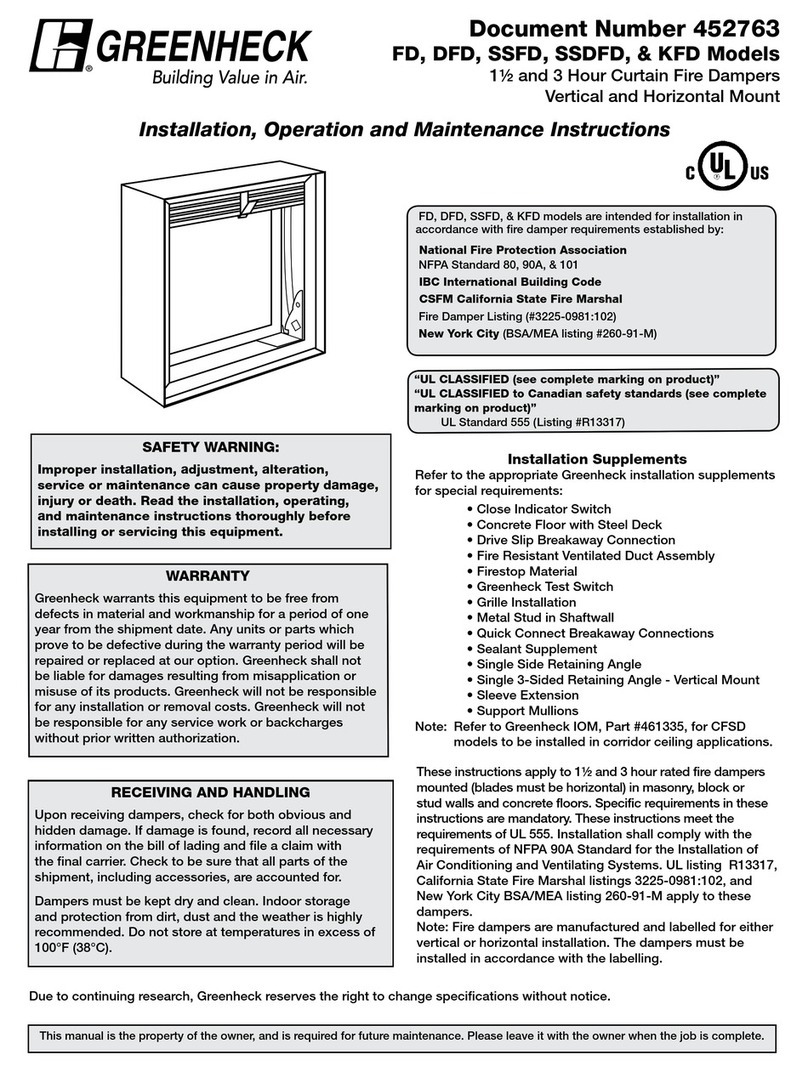
Pre-Installation Guidelines
The basic intent of a proper installation is to secure the
fire damper in, not to, the opening in such a manner as
to prevent distortion and disruption of damper operation.
This is accomplished by allowing the fire damper in rated
separation openings to expand and for the connecting
duct to separate in the event of the collapse of the hanging
system. The following items will aid in completing the
damper installation in a timely and effective manner.
1) Check the schedules for proper damper locations
within the building. Visually inspect the damper for
damage and verify that the fusible link is in place or
has not activated. Never install a fire damper without
the proper UL approved fusible link in place. If damper
is furnished with fusible link, visually inspect the link
to verify its not missing or broken. Replace link as
necessary.
2) Lift or handle damper using sleeve or frame. Do not lift
damper using blades.
3) Damper has label on outside of sleeve indicating a
‘No Screw’ area. Do not install screws into this area as
screws may interfere with unexposed blade linkage and
prevent damper blades from opening and/or closing.
4) Damper has label indicating position of damper
and sleeve assembly in the wall. Install accordingly
to comply with manufacturer’s appropriate UL
Classification file number.
5) Damper must be installed into duct or opening square
and free of twist or other misalignment. Damper
must not be squeezed or stretched into duct or
opening. Out of square, racked, twisted or misaligned
installations can cause excessive leakage and/or torque
requirements to exceed damper/actuator design.
6) Damper must be kept clean and protected from dirt,
dust and other foreign materials prior to and after
installation. Examples of such foreign materials include
but are not limited to:
a) Mortar dust
b) Drywall dust
c) Firesafing materials
d) Wall texture
e) Paint overspray
7) Damper should be sufficiently covered as to prevent
overspray if wall texturing or spray painting will be
performed within 5 feet of the damper. Excessive dirt
or foreign material deposits on damper can cause
excessive leakage and/or torque requirements to exceed
damper/actuator design.
8) Caulking is not necessary, nor is it allowed, between the
damper sleeve and the wall or floor opening (annular
space). However, caulking may be applied to the
retaining angles.
9) ACCESS: Suitable access (such that fusible links can
be maintained, etc.) must be provided for damper
inspection and servicing. Where it is not possible to
achieve sufficient size access, it will be necessary to
install a removable section of duct. (Refer to NFPA 90A).
10) The Code Authority Having Jurisdiction (AHJ) must
evaluate and provide approval of final installation where
variations to these instructions are necessary.
Table of Contents
Pre-Installation Guidelines..............................................................................................................................................................2
Installation...................................................................................................................................................................................2-8
• Clearances Required Between Fire Damper Sleeves and Wall/Floor Openings............................................................ 2
• Sleeve Length and Wall Thickness .............................................................. .................................................................3
• Duct to Sleeve Connections......................................................................... .................................................................5
• Securing the Damper/Sleeve Assembly to Wall and Floor Openings....................................................... .....................5
• Installing Multiple Damper Section Assemblies ........................................................................................................... 6
• Recommended Preparation of Openings in Wood and Metal Stud Walls........................................................... ...........8
• Breakaway Connections.................................................................... ...........................................................................7
1. CLEARANCES REQUIRED BETWEEN FIRE
DAMPER SLEEVES AND WALL/FLOOR
OPENINGS
Fire damper and sleeve assemblies expand during
periods of intense heat. Therefore it is essential that
openings in walls or floors be larger than the fire damper
and sleeve assembly to allow for this expansion.
Minimum clearances required between the outside of fire
damper sleeve assemblies and wall/floor openings are:
• Galvanized steel fire dampers and sleeves: 1/8 in.
(3mm) per foot of damper width and 1/8 in. (3mm) per
foot height with a minimum clearance of ¼ in. (6mm)
Recommended clearances, for width and/or height
dimensions of:
1) 48 in. (1219mm) or less: ½ in. (13mm) clearance
2) More than 48 in. (1219mm) and 96 in. (2438mm)
or less: 1 in. (25mm) clearance
3) More than 96 in. (2438mm): 1½ in. (38mm)
clearance
• Stainless steel fire dampers and stainless steel or
galvanized sleeves: 3/16 in. (4.8mm) per foot of damper
width and height with a minimum clearance of ¼ in.
(6mm), maximum of 2 in. (51mm). Recommended
clearances, for width and/or height dimensions of:
1) 48 in. (1219mm) or less: ¾ in. (19mm) clearance
2) More than 48 in. (1219mm) and 96 in. (2438mm) or
less: 1 ½in. (38mm) clearance
3) More than 96 in. (2438mm): 2 in. (51mm)
clearance
These are total clearances (ignoring fastener heads)
and do not need to be equally spaced around the
damper. Refer to Section 4 and Figure 6 for additional
installation considerations.
2
